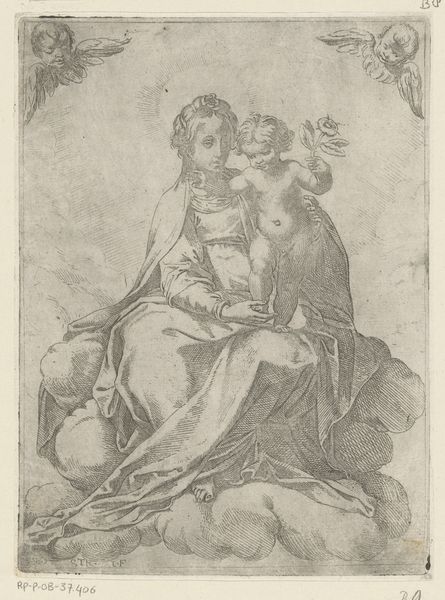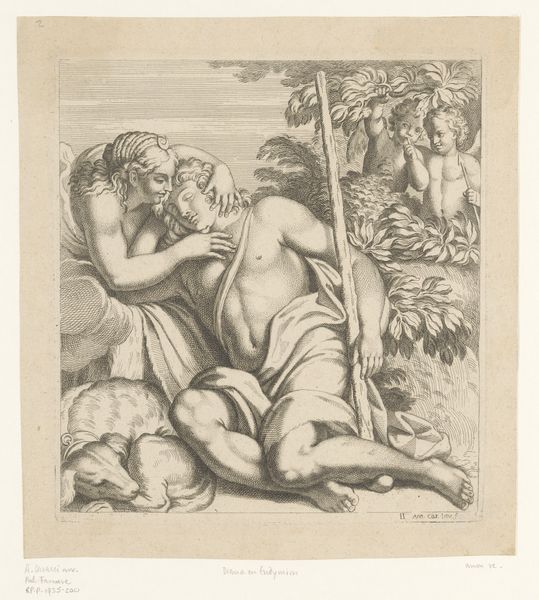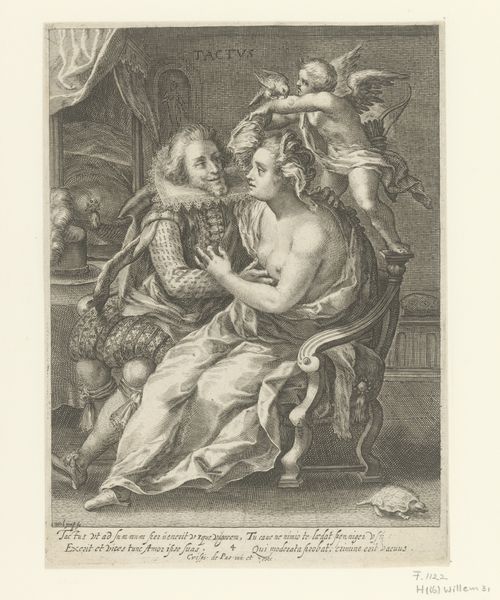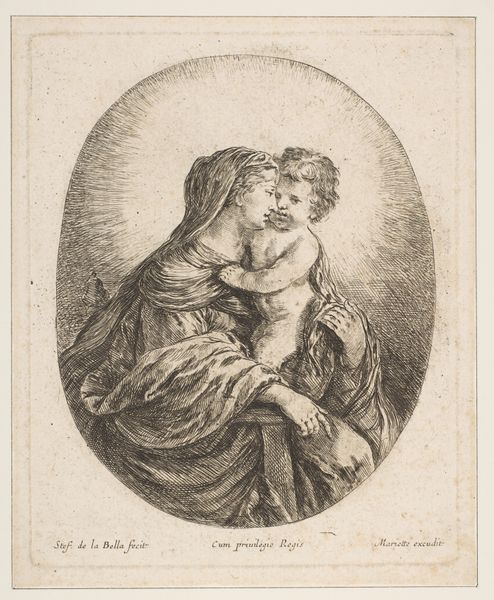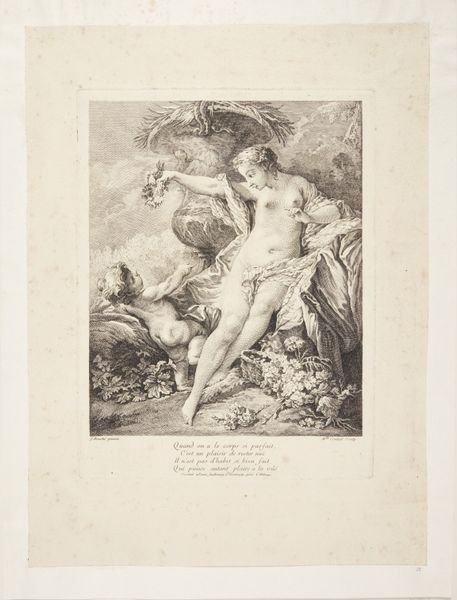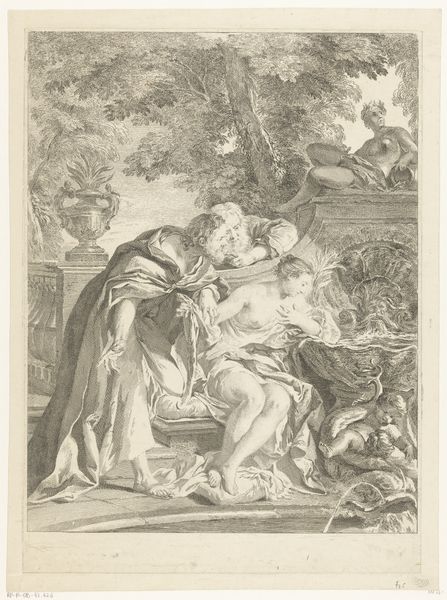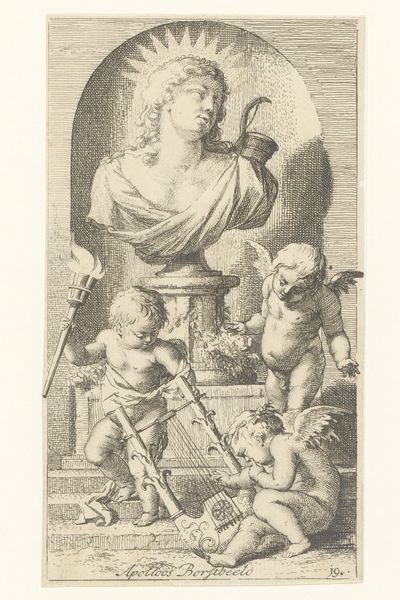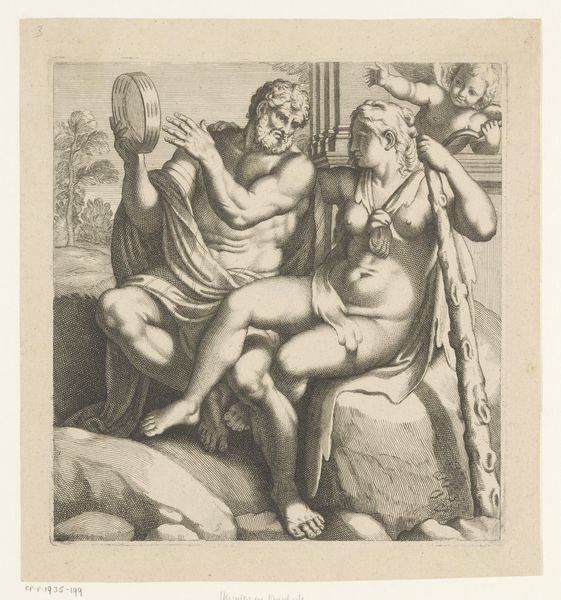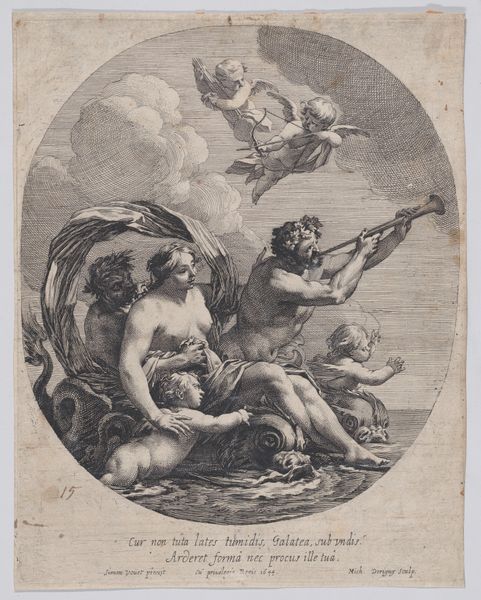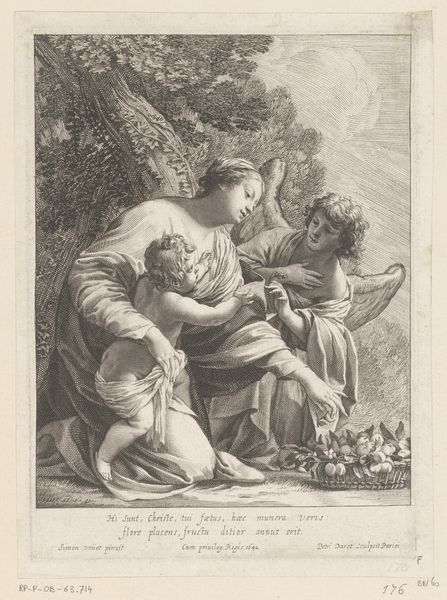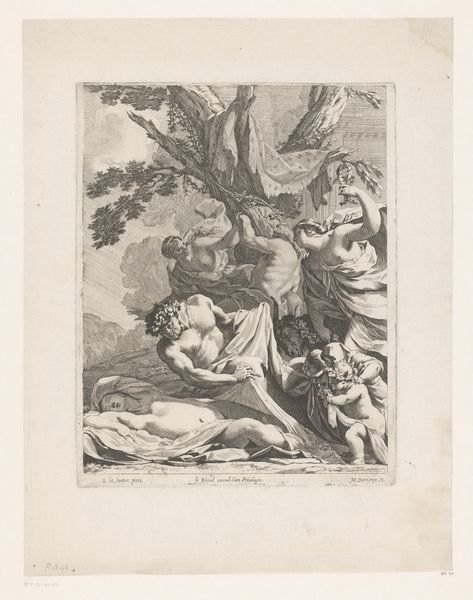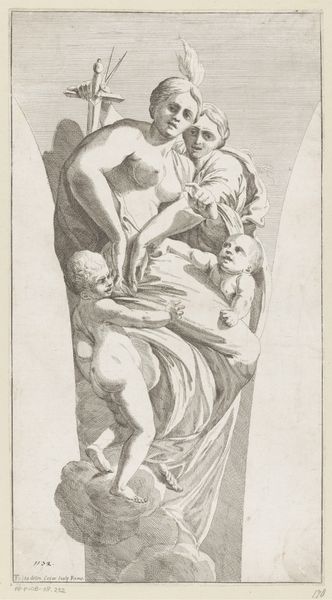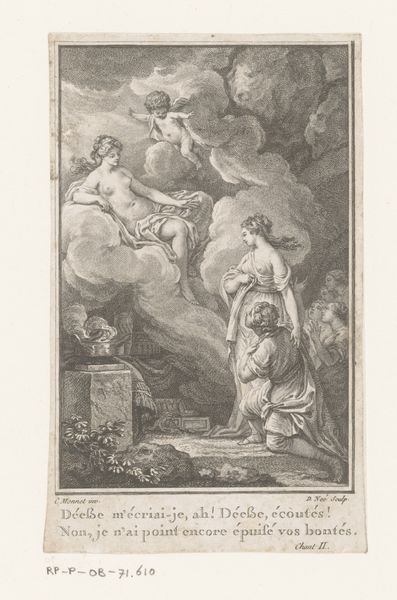
engraving
#
allegory
#
baroque
#
old engraving style
#
landscape
#
figuration
#
line
#
history-painting
#
engraving
Dimensions: height 234 mm, width 194 mm
Copyright: Rijks Museum: Open Domain
Curator: Looking at this engraving by Michel Dorigny, circa 1645, titled "Allegorische voorstelling over de natuur"—an Allegorical Representation of Nature—I am immediately struck by the contrast between the meticulous detail and the overall fluidity of the circular composition. Editor: I see a stage tableau here. The poses, the expressions…they tell a story of nature’s abundance, yes, but it feels forced, constrained by the male gaze and a power dynamic evident in the arrangement of the figures. It's very performative. Curator: The labor and materials speak to the social context. Engravings like these weren't just art objects; they were reproductive tools, mass-produced to disseminate imagery and ideas across Europe. Look closely at the cross-hatching, the varied line weights—they were skilled craftsmen, and this print helped build an appetite and disseminate Vouet’s compositions. Editor: Absolutely, and disseminating certain *ideals* with them. We have to acknowledge the potential for perpetuating hierarchical thinking here. The male figure’s central placement, the gazes of the female figures… This piece encodes societal roles. It makes me question whose “nature” is being represented and who controls that narrative. It embodies very patriarchal Baroque-era thought. Curator: The allegory is clear. We have symbols of abundance, fertility, perhaps even elements of seasonal change depicted around the central male figure. Editor: But where are the laborers? The farmers, the gardeners, the people who actually *engage* with nature to create sustenance? Their labor is invisibilized, while an idealized, masculine figure stands at the heart of what is, ostensibly, an allegorical performance about nature. And what about race? Where is the consideration of indigenous knowledge systems that center nature? It really feels narrow to center on "abundance" alone. Curator: These allegories reflected specific beliefs of their patrons. In terms of production, the printing matrix held labor too, it shaped not just copies of forms but also an economy in the distribution of thought through repeatable imagery for consumers of a privileged demographic. Editor: Understanding those historical contexts is essential to unpacking the full scope of this image and its enduring relevance to conversations about gender and identity today. It's a beautiful image, yet it speaks so pointedly to those power structures inherent to both 17th century artistic production and still today, making it all the more urgent. Curator: An engraving allows many to acquire artworks but is nonetheless rooted in a specific time with its biases.
Comments
No comments
Be the first to comment and join the conversation on the ultimate creative platform.

